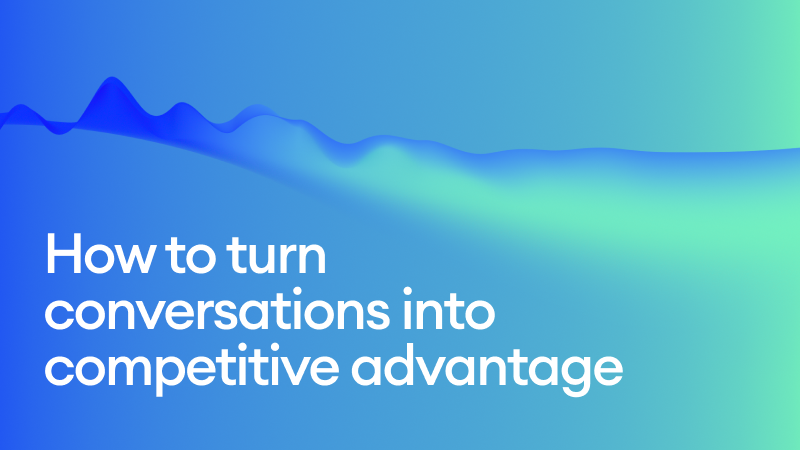- Hiring conversations are full of golden insights. But too often, those insights disappear the moment the call ends. Manual notes are incomplete, memory is fallible, and by the time feedback is collected, key details are already fuzzy.
- Metaview’s AI-powered platform captures, transcribes, and structures every interview automatically. The result is faster, more consistent hiring decisions and a dramatically smoother process for everyone involved.
- Teams see measurable improvements across the board: tighter feedback loops, less bias in evaluations, and a better experience for both candidates and hiring managers.
- This guide explores proven ways talent teams get the most out of Metaview. From automated summaries and scorecards, to bias detection and ATS integrations, you’ll learn how to turn raw conversations into structured insights for faster, fairer hiring.
In brief
Manual note-taking actively harms the interview process. Talent teams use Metaview to:
- Transcribe and annotate interviews automatically
- Instantly generate actionable summaries
- Create consistent hiring experiences and reduce bias
- Improve collaboration between hiring managers and recruiters
- Get key insights from across all interviews
- Complete scorecards and push to ATS tools in a click
The right tools completely transform your recruiting approach and lead to far better outcomes.
Why interview analysis needs an upgrade
Interview analysis today simply hasn’t kept pace with the speed or complexity of modern hiring. Recruiters lose hours every week on manual documentation, and even then, key moments slip through the cracks. It’s an exhausting process that creates inconsistent records and leaves too much room for bias.
- Traditional note-taking is error-prone, biased, and exhausting. Research shows recruiters lose up to five hours per week on manual documentation that still misses critical details. (AICOVERY)
- Hiring’s getting harder. Your calendar isn’t growing. High-growth teams juggle dozens of roles, making it impossible to revisit every call or align stakeholders without automation.
- Gut feel leads to poor hiring choices. And worse, it makes your process less equitable and fair. AI assistance can focus reviewers on objective criteria, a key step toward “reduced bias in selection” according to LinkedIn Pulse.
- Competitive candidates expect speedy, informed feedback. Slow follow-ups erode experience and push top talent elsewhere, underscoring the need for instant, structured insights.
- 67% of hiring leaders say that time saved and speed to hire are the key reasons to use AI in the recruitment process. (Boterview)
In short, interview analysis needs to move faster, get smarter, and support more consistent, data-informed decisions. The right tools make that shift possible, and Metaview is leading the way.
What makes Metaview unique for talent teams?
- Metaview turns interviews into structured, decision-ready data, automatically and in real time. The moment a call ends, the platform delivers clean, speaker-labeled transcripts.
- One-paragraph candidate summaries spotlight strengths, concerns, and role fit. Interviewers hit “Send to ATS” and move on, while hiring managers receive an executive snapshot without needing to watch the recording or dig through notes.
- AI-generated scorecards pre-populate in Greenhouse, Lever, and more, so every decision is backed by data, not gut feel.
- Enterprise-grade GDPR and SOC II compliance safeguard sensitive candidate data—critical for regulated industries or global hiring footprints.
- Proprietary analytics dashboards reveal coachable moments for interviewers, turning every conversation into a training opportunity.
Together, these capabilities make Metaview more than a transcription tool. It’s a central nervous system for high-performing recruiting teams.
5 ways talent teams harness conversations with Metaview
Beyond transcription, here’s how leading recruiting teams use it every day to move faster, collaborate better, and make more confident decisions.
1. Capture every conversation effortlessly
- Enable automatic recording and calendar-based prompts. Metaview joins calls silently, so recruiters never forget to hit “record.”
- Use real-time transcription to stay fully present. Recruiters can focus on rapport while the AI transcribes verbatim dialogue, a practice that saves 5+ hours weekly per recruiter.
- Share live transcripts with co-interviewers for instant collaboration. Tag moments or questions on the fly, building a shared understanding during the call itself.
- Store recordings in a searchable library. Future interviewers can prep faster by skimming past answers, improving consistency across panel rounds.
2. Turn conversations into actionable summaries
- Leverage one-click candidate overviews. After each call, Metaview condenses key traits, concerns, and next steps into a single paragraph, ready to paste into Slack or ATS.
- Deliver feedback to hiring managers within minutes. Fast turnarounds impress stakeholders and prevent bottlenecks in later-stage scheduling.
- Archive summaries for future roles. Today’s silver medalist might be next quarter’s perfect fit—having a concise recap speeds rediscovery.
3. Boost consistency and reduce bias
- Standardize interview templates across teams. Consistent question sets ensure every candidate faces equal evaluation criteria, a best practice made scalable by AI-driven tools. (LinkedIn Pulse)
- Surface talk-time ratios to spotlight unconscious bias. If interviewers consistently dominate the conversation or interrupt certain demographics, dashboards make it impossible to ignore.
- Export bias indicators to DEI reports. Leadership can track progress toward fair-hiring goals using concrete, shareable metrics.
4. Supercharge collaboration with ATS integration
- Activate deep links between Metaview and your ATS. Candidate summaries, transcripts, and scorecards auto-sync to profiles in systems like Greenhouse or Ashby.
- Centralize feedback so hiring managers don’t have to hop between platforms.
- Use Metaview comments to spark asynchronous debate. Stakeholders can discuss specific transcript snippets, shrinking the need for debrief meetings and speeding consensus.
5. Mine insights from interview data
- Identify pattern outliers such as recurring objections or skill gaps. Metaview’s analytics reveal trends “that would otherwise go unnoticed,” and its value compounds over time.
- Benchmark interviewer performance. Dashboards show who probes deeply, who skips core competencies, and who needs coaching.
- Feed findings into workforce planning. Aggregate data highlights which roles require revamping job descriptions or additional hiring budgets.
- Implementation Blueprint
A smart roll-out process in 3 phases
Installing Metaview doesn’t require overhauling your entire hiring process overnight. The most successful teams take a phased approach—building confidence and momentum as they go. Here’s how to do it:
Phase 1: Crawl (0–30 days)
- Start with passive recording and auto-transcription on a pilot role. Recruiters get comfortable letting the AI listen in without changing their behavior.
- Hold weekly retro sessions to review transcripts and summaries. Early feedback builds trust and uncovers quick-win customization needs.
- Document SOPs for data storage and privacy. Metaview’s GDPR/SOC II footing makes compliance straightforward, but every org needs clear internal rules.
Phase 2: Walk (31–90 days)
- Roll out standardized scorecards. Shifting from generic note tools to recruiting-specific templates makes your AI outputs far more actionable.
- Integrate with your ATS and calendar suite. Automatic syncing removes copy-paste friction and ensures stakeholders see real-time updates.
- Train interviewers on bias dashboards. Show them how talk-time data and interrupt counts translate into fairer hiring practices.
Phase 3: Run (90+ days)
- Expand to every role and region. Global teams benefit from real-time translation and timezone-agnostic collaboration.
- Launch analytics-driven coaching programs. Use outlier reports to tailor workshops for interviewers who need deeper probing or better listening skills.
- Transition debriefs to async. With rich written evidence, many teams replace live panels with threaded scorecard discussions, speeding up decisions by days.
- Start with passive recording and auto-transcription on a pilot role. Recruiters get comfortable letting the AI listen in without changing behavior.
- Hold weekly retro sessions to review transcripts and summaries. Early feedback builds trust and uncovers quick-win customization needs.
- Document SOPs for data storage and privacy. Metaview’s GDPR/SOC II footing makes compliance straightforward, but every org needs clear internal rules.
Key improvement metrics
With Metaview in place, here are the crucial measures you can expect to improve, almost overnight:
- Hours saved per recruiter
- Time-to-decision
- Candidate NPS
- Interviewer talk-time balance
- Quality of hire
These are both realistic and easily achievable thanks to smooth process automation and the smart insights you gather as a result.
Interview intelligence tools are the future for recruiters
AI is already being described as “the recruiter’s indispensable co-worker.” (HeroHunt Guide)
Forrester predicts the interview-intelligence software market will expand at a 20% CAGR through 2027, and talent teams will soon wonder how they ever lived without it.
But most people haven’t caught up yet. Talent teams that embrace interview intelligence today will own a proprietary data moat tomorrow.
Metaview empowers recruiters to be present, analytical, and equitable without any extra effort. Automated transcripts, summaries, and scorecards remove grunt work, while elevating decision quality.
That means faster feedback loops, more objective candidate scoring, and richer collaboration. Which amounts to stronger offers, accepted sooner.
Ready to see Metaview in action? Start your free trial to see how AI interview intelligence can transform your talent team’s day-to-day and bottom line.
FAQs for talent teams
What is Metaview's primary function for talent teams?
Metaview captures, transcribes, and structures hiring conversations automatically. It’s an intelligent notetaker that sits silently in the background. Teams get structured summaries and transcripts delivered moments after the call ends.
How does Metaview improve the hiring process?
Metaview helps teams move faster and make more consistent decisions. Standardized templates and AI-generated scorecards reduce the risk of gut-based hiring, while fast, structured feedback improves the candidate experience. Hiring managers get clear signals, and recruiters spend less time chasing feedback or rewatching calls.
What benefits do companies experience by using Metaview?
Organizations using Metaview report saving dozens of recruiter hours per month. Interviewers benefit from clearer notes and faster decision cycles, while leadership sees improved hiring accuracy. Companies like Brex and Quora say Metaview helps them maintain a hiring high bar and great candidate experiences.
How does Metaview ensure data security?
Metaview is fully compliant with GDPR, CCPA, and SOC II standards, ensuring sensitive candidate data is handled with care. For companies hiring across borders or in regulated industries like finance and healthcare, this level of compliance offers peace of mind and a solid foundation for global expansion.
How does Metaview maximize interview data?
Start with automated recordings and summaries, then layer in AI-powered scorecards and dashboards. Over time, teams can use conversation analytics to spot coaching needs, hiring bottlenecks, or gaps in candidate pipelines.
The goal is to go from one-time conversations into reusable, measurable assets.


